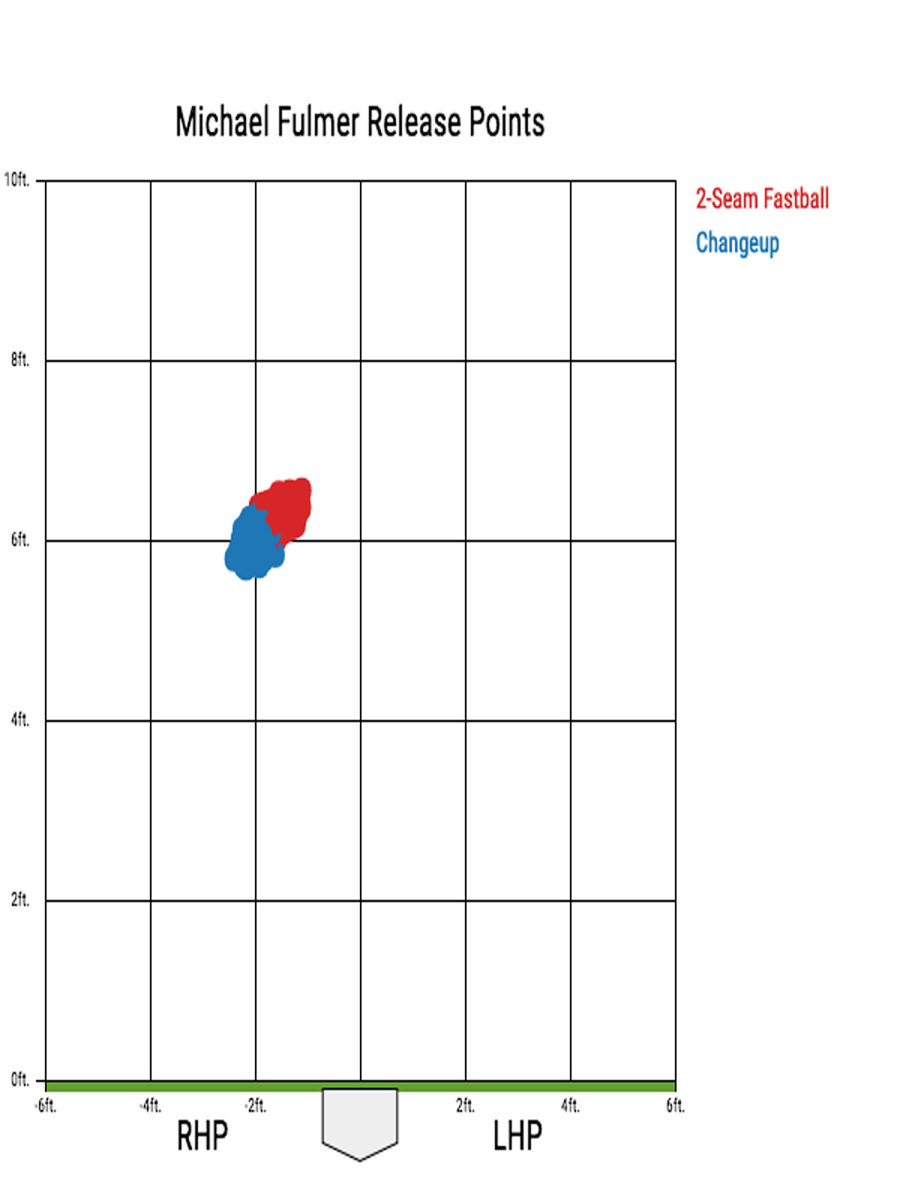Change for the better: See how Michael Fulmer uses a filthy pitch to beat baseball's best

Michael Fulmer needed all of one season to establish his changeup as one of the best in the league. The Detroit righty won the AL Rookie of the Year Award in 2016, going 11-7 with a 3.06 ERA , a 1.12 WHIP and a 3.76 FIP. His changeup had a lot to do with his success. He threw it 16.9% of the time, the lowest rate of his four pitches, but produced a 19.6% whiff rate and 64.2% ground-ball rate on balls in play. Numbers like that suggest that Fulmer's changeup is as devastating an out pitch as there is in baseball.
This year, the 24-year-old Fulmer is proving his early success was no fluke. He has made 11 starts this season, pitching to a 3.00 ERA, a 2.97 FIP and a 1.11 WHIP with 59 strikeouts against 16 walks in 75 innings. He has, in essence, been a better version of the pitcher he was a year ago.
In addition to the changeup, Fulmer boasts a four-seam/sinker combo that sits in the mid-90s and a power slider, but he’s not really a strikeout pitcher. He had a 20.4% strikeout rate last year, and that has dipped slightly to 19.3% this year. Instead, he succeeds by pairing his modest strikeout rate with a gaudy ground-ball rate, thereby producing just as many, if not more, easy outs as a pitcher who strikes out more than one-quarter of the batters he faces.
Fulmer has made one significant change this season that is worth exploring. Last year, Statcast tracked his four-seam fastball with a 33.4% usage rate, and his sinker with a 23.5% usage rate. This season, those numbers have all but flipped. He’s throwing his sinker 31.2% of the time, while his four-seamer checks in at a usage rate of 27.6%. Why the increased profile for the sinker this season? Simple. It works better in conjunction with Fulmer’s best pitch, the changeup.
The 30: Astros stay on top while an unlikely slugger is powering the Yankees
Sinkers and changeups are natural partners. Both dip and move to the pitcher’s throwing-hand side as they get into the hitting zone. Because of their velocities, a sinker has more dart to it, while a changeup fades and appears to fall off a table. If a pitcher can repeat the same arm speed and release point, he makes it hard on hitters to distinguish between a sinker and changeup coming out of his hand.
Fulmer is doing a great job of that, which we can see thanks to Statcast. Here are Fulmer’s release points for every sinker and changeup he has thrown this season.

A hitter would need telescopic vision to be able to tell the difference between those release points in real time. By throwing his sinker and changeup out of the same arm slot time and time again, Fulmer is able to conceal the identity of the offering, often until it is too late for hitters to do much, if anything, against it.
Another inherent truth of changeups is that they work better against opposite-side hitters. Righties are going to throw their changeups more against lefties, and lefties will throw it more against righties. The dip and fade of a changeup means that it moves away from opposite-side hitters, thus making it one of the best weapons to negate a platoon advantage.
When a changeup is as good as Fulmer’s though, it’s silly to use it for only that purpose. Fulmer threw his change just 12.2% of the time against righties last season, and that does him a disservice. Even if it isn’t the same caliber of weapon that it is with a lefty in the box, his change is still plenty good enough to get righties out with regularity. The best way for him to establish it against same-siders, however, was to increase the usage of his sinker.
Fulmer’s changeup usage rate is up to 19.1% from 16.9% last year. While he’s throwing it more against lefties—22.9% of the time—he was already at a 21.2% usage rate against them last year. He has increased the changeup’s presence by more than three percentage points against righties, jumping to 15.3% from 12.2%. They’ve swung and missed 19.8% of the time, and are just 5-for-22 against the change when putting it in play. Thirteen of those 17 outs were either grounders or popups.

Let’s now take a look at the interplay between Fulmer’s sinker and his changeup. We’ll use examples of him going from the sinker to the change, or vice versa, against hitters from both sides of the plate. When we’re done, we’ll have a great understanding of how and why the sinker-change combo has been so lethal for Fulmer this season.
Because we were just talking about righties, let's see how Fulmer fared against one of the best righthanded hitters in baseball. Back on May 11, Fulmer allowed one run on three hits with seven strikeouts in seven innings in a win over the Angels. You can probably guess where this is going.
Mike Trout came up to the plate in the sixth inning for his third at-bat of the game. He was already 0-for-2, and was about to be 0-for-3. On a 1-1 pitch, Fulmer went to the sinker. He spots it well on the outer-third, and Trout fouls it off for strike two.
A couple pitches later, with the count at 2-2, Fulmer breaks out not only the first changeup of this at-bat, but the first one Trout had seen all night. Pay careful attention to where it is in the zone in comparison with the sinker a few pitches earlier.
Fulmer dropped in the change in basically the exact same spot as the sinker Trout had just seen, getting him out in front of the pitch and inducing a foul popout to third baseman Nicholas Castellanos.
Perhaps the best sequence Fulmer has had this year came in a loss. Against the Rays on the road on April 18, Fulmer faced Tampa Bay first baseman Logan Morrison with a man on first and one out in the fourth inning. Fulmer started him out with an absolutely filthy changeup.
Fulmer fell behind with a couple of balls on the next two pitches. On 2-1, he came back with a sinker to even the count.
That’s a perfectly spotted sinker. It starts its path to the plate coming at Morrison on the inside corner, which almost forces him to give up on it if he isn’t sitting sinker. The pitch comes back over the plate to be comfortably in the zone, but Morrison has already decided to take the pitch. The result is a 2-2 count, which plays more to Fulmer’s favor than Morrison’s. After showing him hard stuff on three straight pitches, Fulmer goes back to the change, inducing a weak groundout to Miguel Cabrera at first base.
The sinker-changeup pairing has brought Fulmer to another level this season. Most importantly, it has helped him prove his top-of-the-rotation bona fides. If he keeps it up, Fulmer figures to be a dominant pitcher for years to come.
